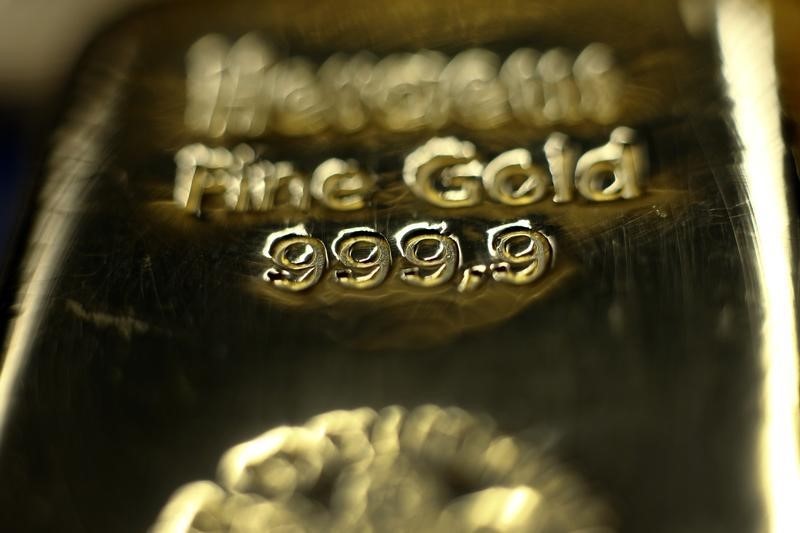Investing.com - Gold prices fell from the previous session's three-week high on Monday, as the U.S. dollar recovered from last week's losses.
The dollar index, which measures the greenback’s strength against a trade-weighted basket of six major currencies, was up 0.55% at 98.81. The greenback lost almost 2% last week, as the euro surged after the latest easing measures announced by the European Central Bank on Thursday fell short of market expectations.
Gold prices often move inversely to the U.S. dollar, as gold becomes more expensive for buyers using other currencies.
Gold for February delivery on the Comex division of the New York Mercantile Exchange shed $7.20, or 0.66%, to trade at $1,076.90 a troy ounce during U.S. morning hours. On Friday, prices rose to $1,088.30, the most since November 16, before ending up $22.90, or 2.16%.
The Labor Department said Friday the U.S. economy added 211,000 jobs last month, beating expectations for 200,000. The unemployment rate held steady at 5.0%, matching forecasts.
The robust data solidified expectations that the Federal Reserve will hike interest rates for the first time in nearly a decade at its upcoming meeting on December 15-16.
While investors widely expect U.S. interest rates to start rising later this month, they anticipate the pace of increases to be gradual. A gradual path to higher rates is seen as less of a threat to gold prices than a swift series of increases.
Meanwhile, silver futures for December delivery inched down 12.3 cents, or 0.85%, to trade at $14.40 a troy ounce. Prices surged 45.1 cents, or 3.2%, on Friday.
Elsewhere in metals trading, copper prices turned lower after hitting a one-week high on Monday, as traders looked ahead to a deluge of data this week which could provide more evidence of a slowdown in China.
Trade figures are due on Tuesday, followed by inflation on Wednesday and industrial production and retail sales on Saturday. The Asian nation is the world’s largest copper consumer, accounting for nearly 45% of world consumption.
